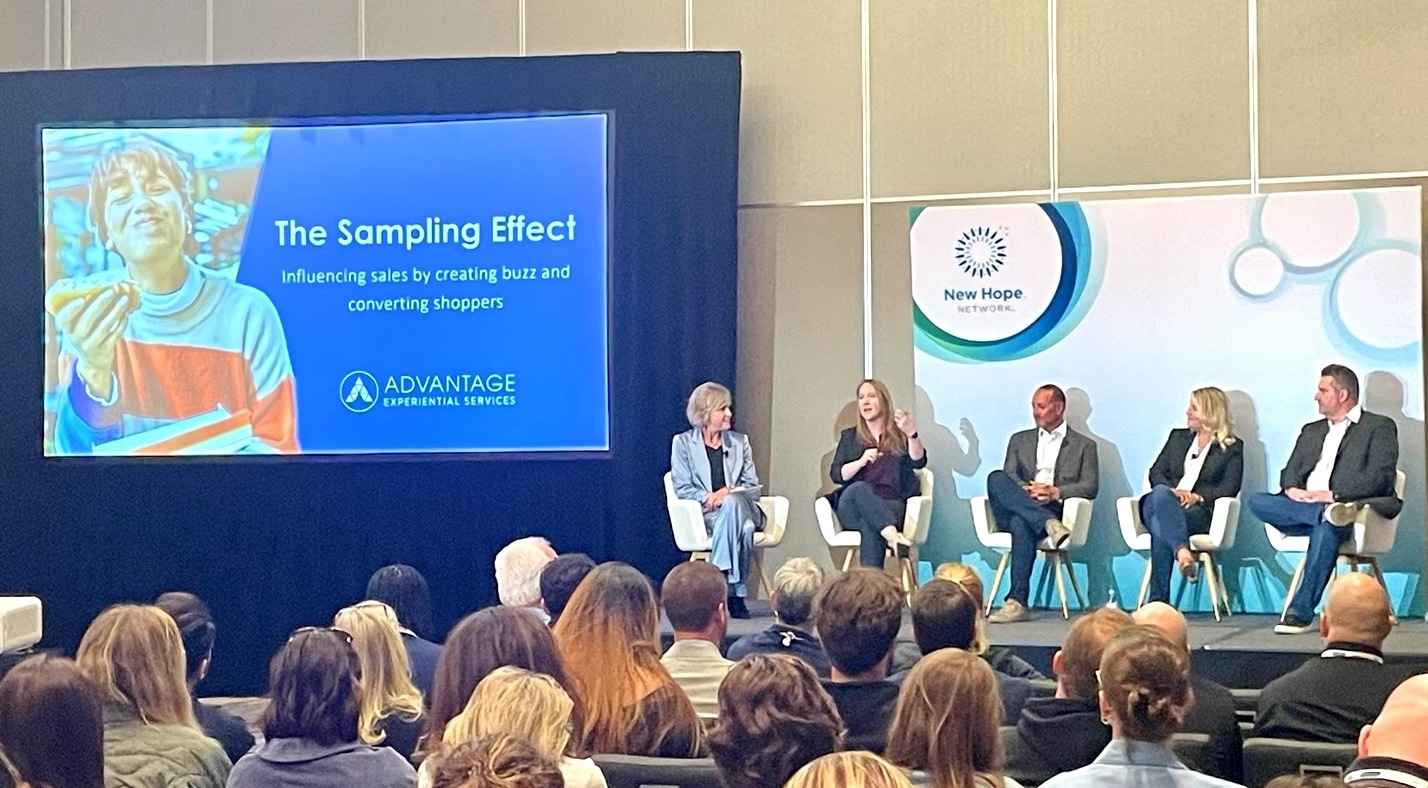Tens of thousands of food and beverage industry leaders convened this week in Anaheim, Calif., to share ideas, get a look at the latest trends, try out new and emerging products and make bets on which will become household staples in the years ahead.
One of the biggest draws at the Natural Products Expo West conference were all the samples.
From chips made from chicken skin to caffeinated birthday cake-flavored energy bars to 100 kinds of yogurt, the convention hall floor was filled with virtually every natural or organic product in or on the way to the market.
Some of those products will become grocery staples, and each of them will start with a sample.
“The importance of sampling to brand building, consumer trial, awareness, purchase and conversion can’t be overstated,” said Andrea Young, chief operating officer for experiential services at Advantage Solutions.
Young, who hosted a standing-room only panel on the power of sampling alongside four Advantage colleagues, said sampling and product demonstration, at its essence, is a key tool to convert shoppers into buyers.
The data bear that out. A recent retailer study conducted on behalf of Advantage shows that 98% of shoppers in a warehouse store try a sample on a typical shopping trip. What’s more, 91% of them credit sampling and demo with influencing their buying decision.
“Our sampling programs help consumers discover products, understand their value propositions, and in the end, can impact the way they live their lives,” said Amy Lang, president of global operations for Club Demonstration Services, an Advantage Solutions company. “That may sound big or grandiose, but we see it every day.”
Shoppers are constantly shifting how and where they buy.
But they also routinely evolve into new life stages. If they become a caregiver, or a new parent or change their dietary habits, they shift what they buy. This opens them up to new products and new categories with which they have little to no buying experience.
Sampling and demo “have enormous power” to influence their decisions, offering a lower-risk, “try before you buy” option, said Alan Verdun, executive vice president of client success at Advantage Solutions. And once shoppers make their decision, they’re likely to remain loyal to those products.
“It’s one of the strongest marketing strategies to drive awareness, trial and conversion,” he said.
Not only does sampling help brands old and new target and find their core customers and future brand advocates, it helps retailers convert a bite into a new buyer.
Beyond that, it helps drive brand and category awareness and creates an inviting experience in-store by providing shoppers with a surprise and a delight, said Rob Cowgur, executive vice president operations, Walmart Retailtainment HQ, Advantage Solutions. Retailers want to be seen as a destination, a place where shoppers want to spend more of their time.
“Retailers want to educate consumers that they have a large portfolio of products that can meet their needs. They also want to be known for smart innovation and being the first to carry the new products their customers want,” he said.
“You see it here on the floor of Expo West,” Cowgur said. “People are out here carrying two or three bags filled with samples. Everyone loves a sample.”
That “surprise and delight” extends beyond a traditional brick-and-mortar shopping experience, he said. As consumers shift where and how they shop and new innovations continue to flood the market, sampling methods will as well.
“Whether it’s curbside pickup, digital, direct-to-home or in categories outside of food, the evolution of retail demonstration sampling or experiential is going to be a massive center of focus for brands and retailers,” Cowgur said.
The inevitable evolution aside, sampling and demonstrations will remain among the most-powerful tools to build new brands, reinvigorate existing brands, create experiences and more, Young said.
“It’s all about connecting with consumers with brands and retailers at all stages, one sample at a time,” she said.
